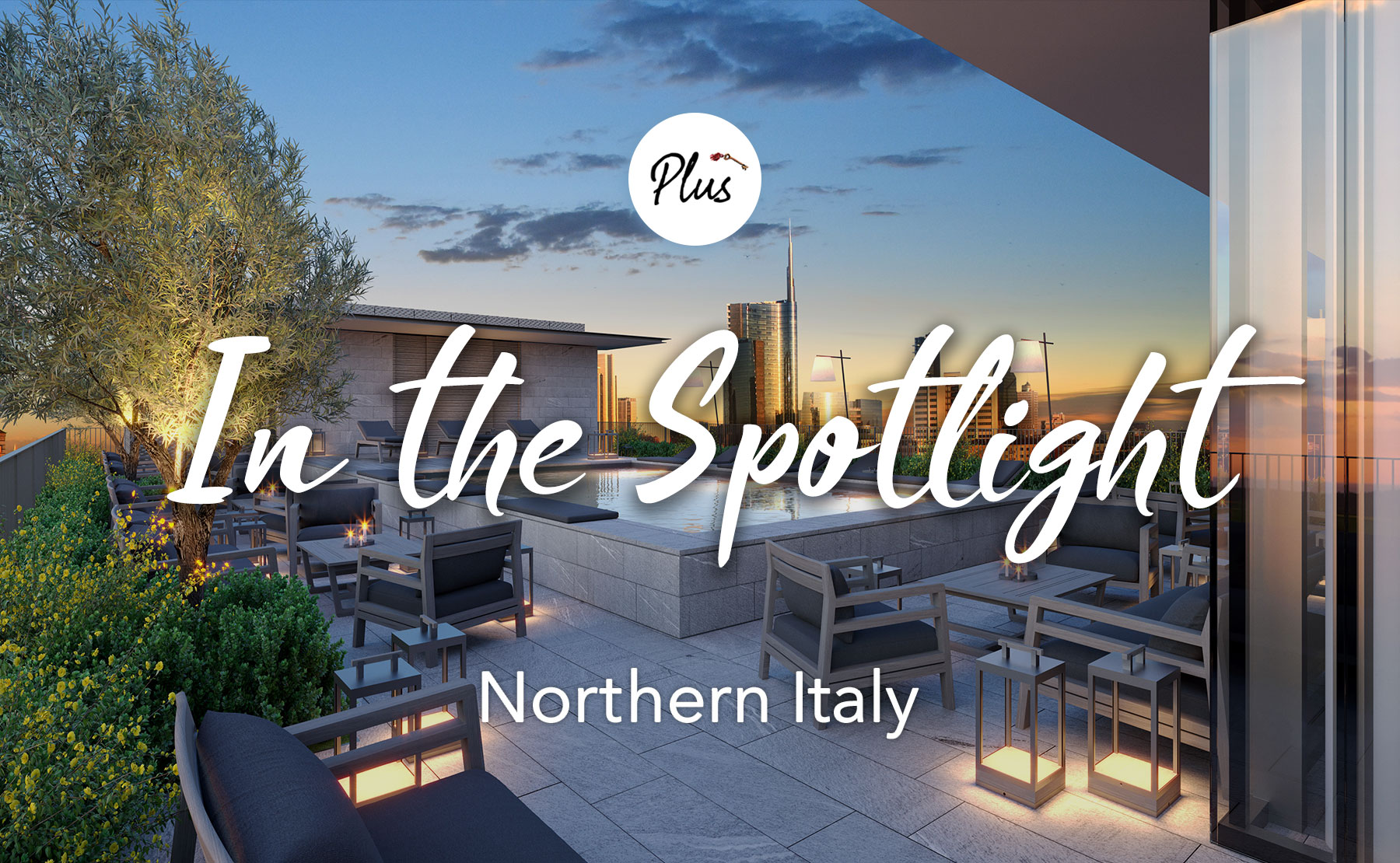
Click on each hotel to see all of the privileges they offer. Click here to learn more about Tablet Plus.
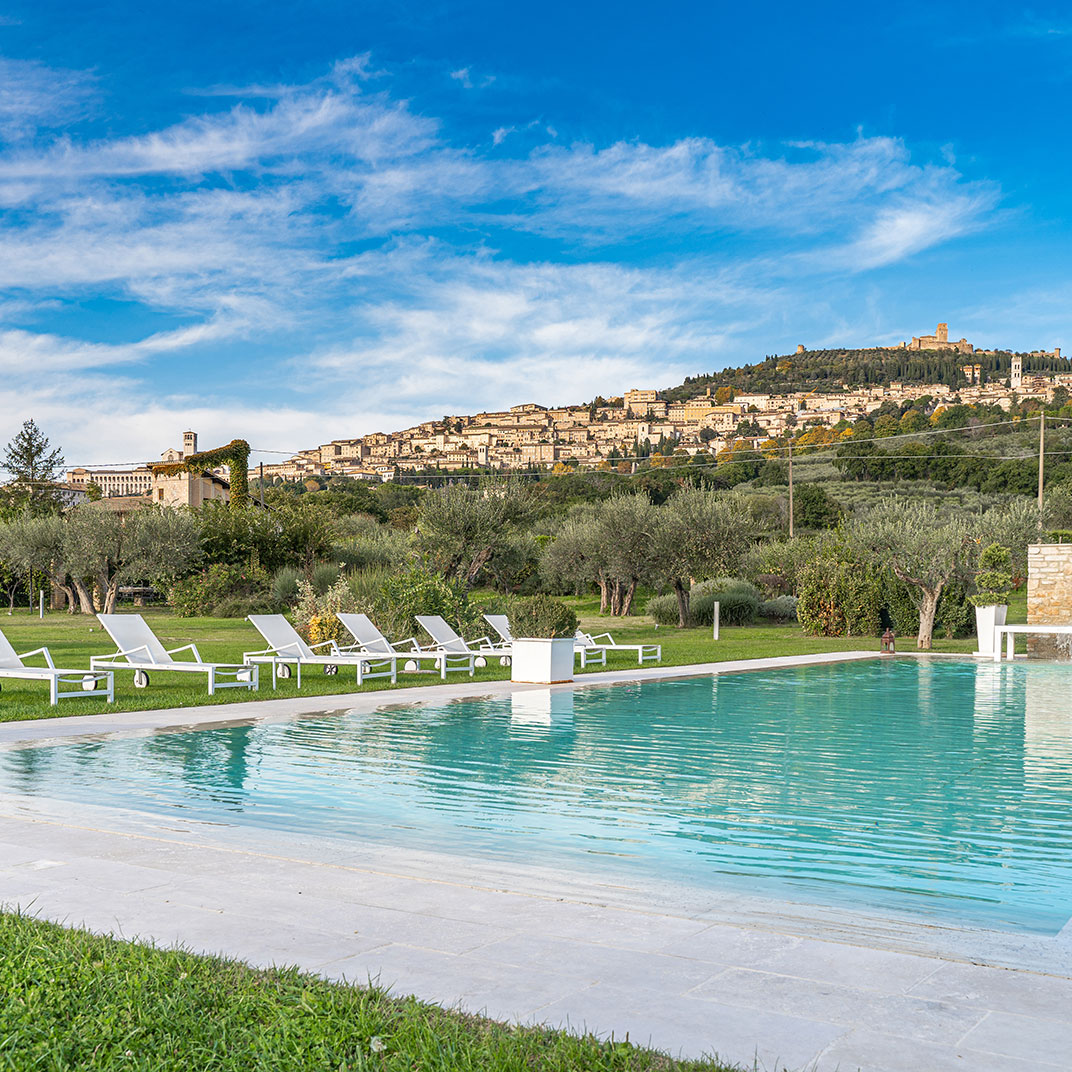
Tenuta San Masseo
Assisi
In the Umbrian countryside just outside of Assisi, with a view of the medieval city on the hill in the near distance, Tenuta San Masseo is a classic of a genre at which Italy excels: a farmhouse hotel consisting of just a few rooms — in this case seven — all supplied with every ingredient necessary for living out an absolutely idyllic country-house fantasy.
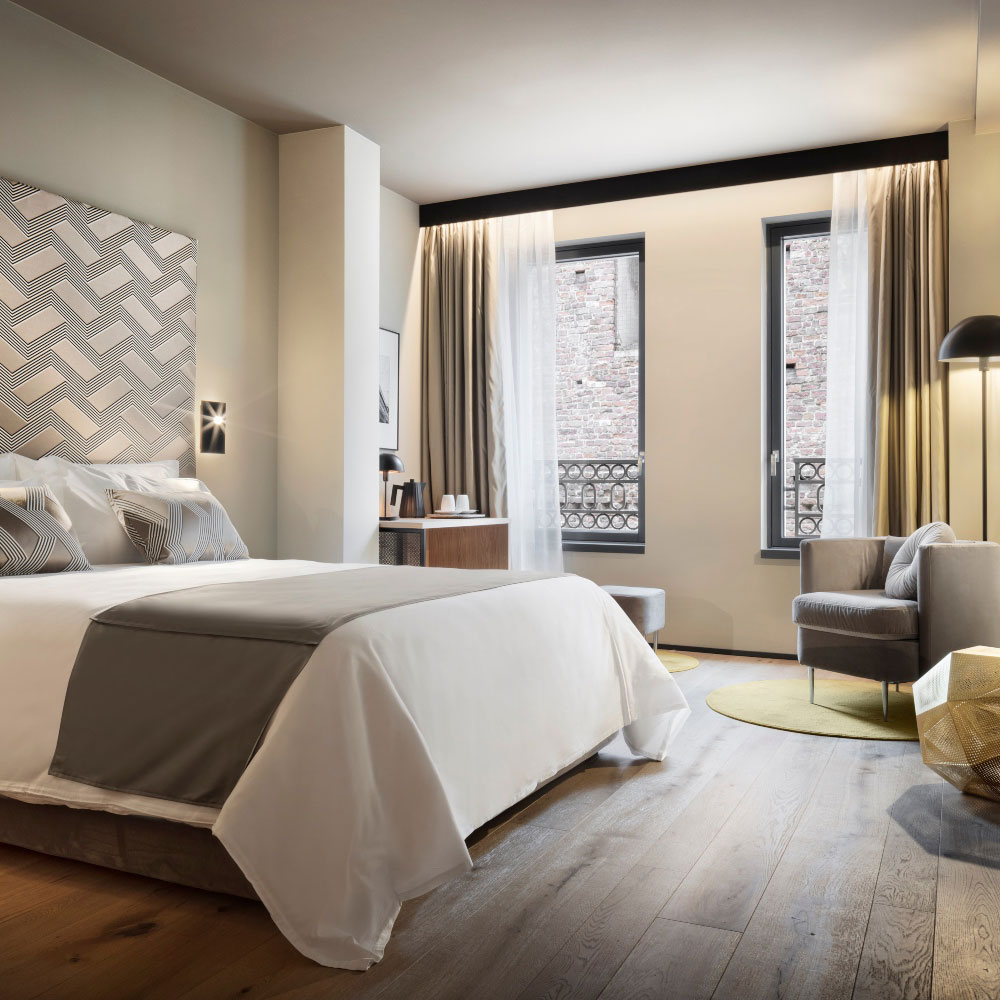
Speronari Suites
Milan
The location is as central as it gets, a scant 200 meters from the Piazza del Duomo. And while the building that contains Speronari Suites is a 19th-century palazzo, its interiors could hardly be more contemporary — Angus Fiori Architects and interior designer Francesca Attolini have created a powerful reminder of why Milan is Italy’s capital of modern style. Though the atmosphere is residential, this is a proper luxury hotel, albeit a low-key one; witness the high-end comforts in the bedrooms and particularly the bathrooms, and the gym and sauna provided for guest use. Connected to the hotel is El Porteño, an Argentine bistro with a globe-spanning selection of wines.
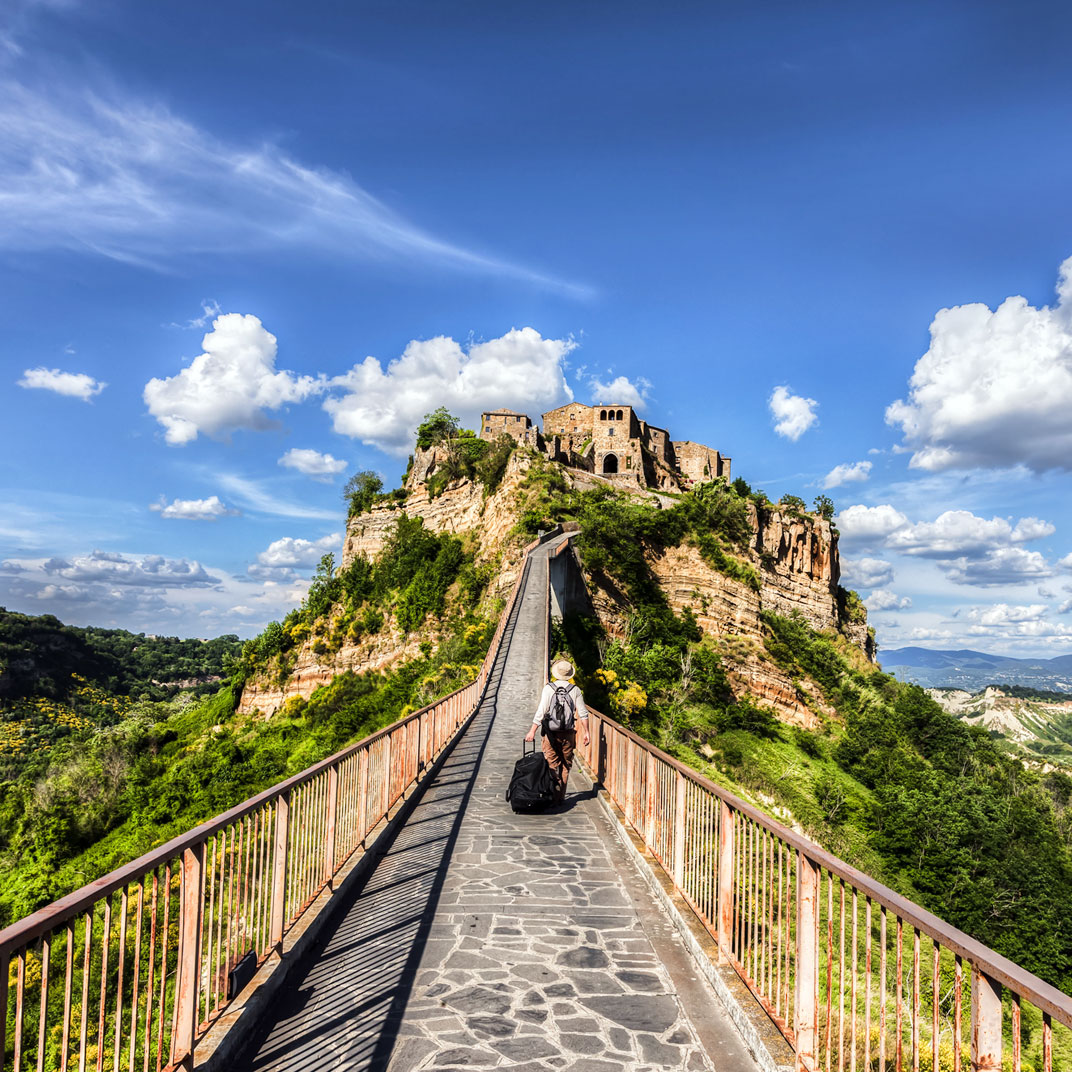
Corte della Maestà
Civita di Bagnoregio
All roads may lead to Rome, but there’s no one to stop you from pulling a U-turn. You won’t have to travel far outside the capital before the medieval village of Civita di Bagnoregio rises up into view on a hilltop before you. It’s a vision so magnificent that you’ll have a hard time believing that Italians once nicknamed the place la cittá che muore – the dying city. But natural disasters happen even in a landscape as bucolic as this one: an earthquake struck in 1685, and the residents fled, including the bishop, who abandoned his home and seminary.
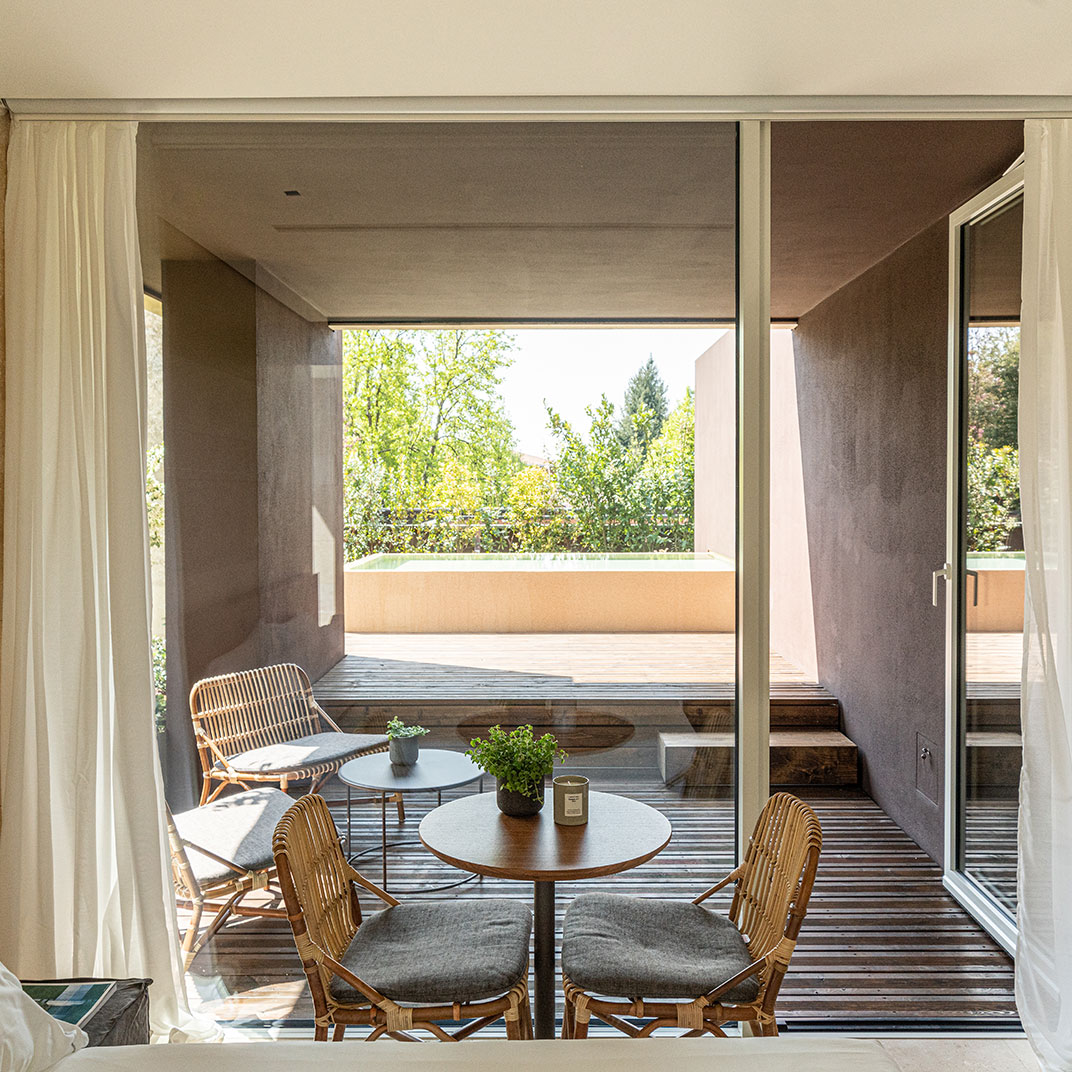
C-Hotel & Spa
Cassago Brianza
The typical Lake Como experience — if indeed there is such a thing — would involve some opulent little villa, built, if possible, no later than about 1900. Regulars may look slightly askance at something as modern as C-Hotel, in the hills a dozen or so miles from the lake’s shores. But this hotel rather forcefully makes the point that one need not sacrifice comfort in the name of contemporary design.
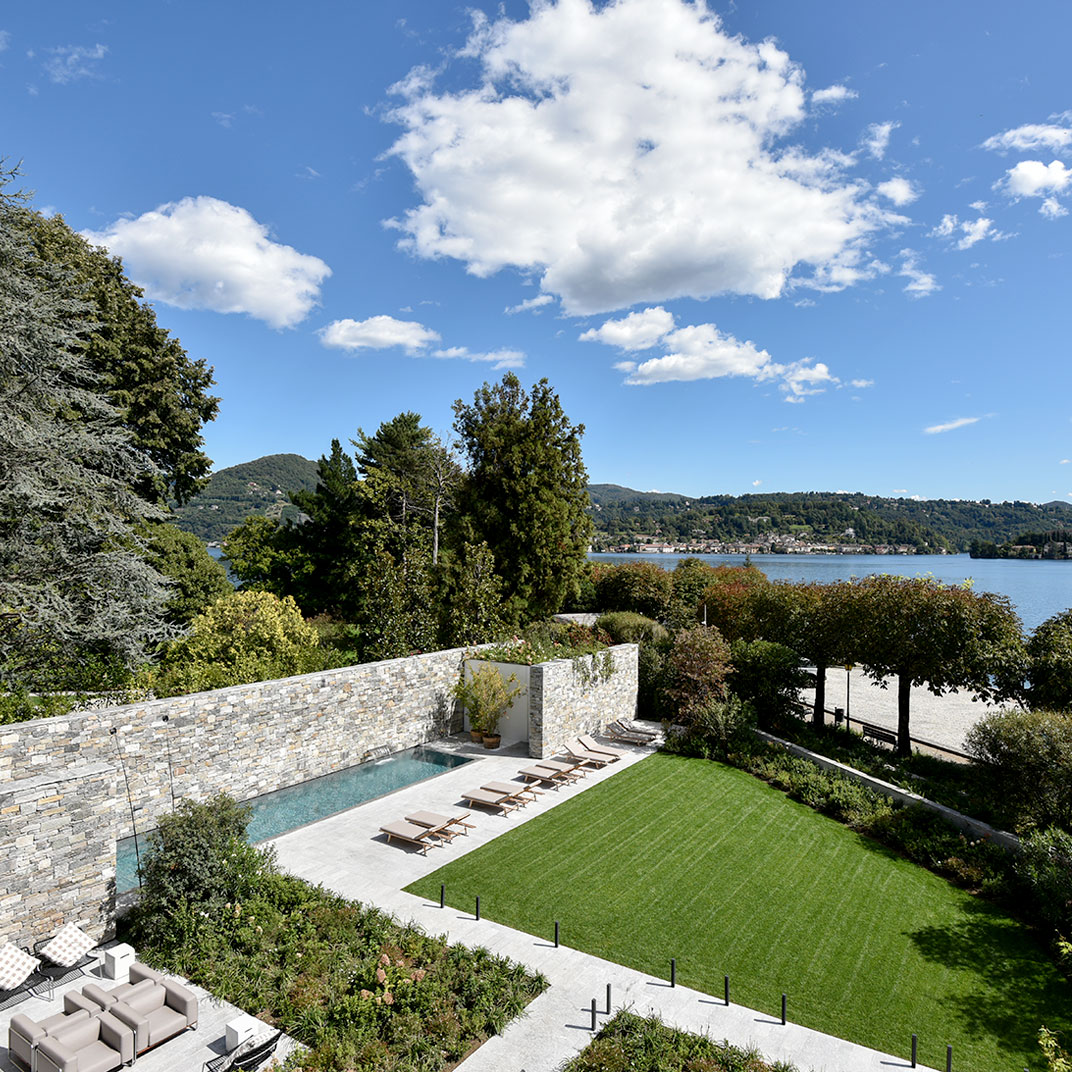
Casa Fantini
Pella
Though certainly less famous than lakes like Como and Maggiore, Piedmont’s Lake Orta is no slouch in the scenery department, thanks in part to the impossibly picturesque San Giulio Island, whose Benedictine monastery lends the lake a certain aura of the supernatural. On a promontory facing the island, on the lake’s western shore, is the decidedly contemporary Casa Fantini, a boutique hotel that demonstrates the typically Italian ease with which modern design complements the remnants of history and the grandeur of nature.
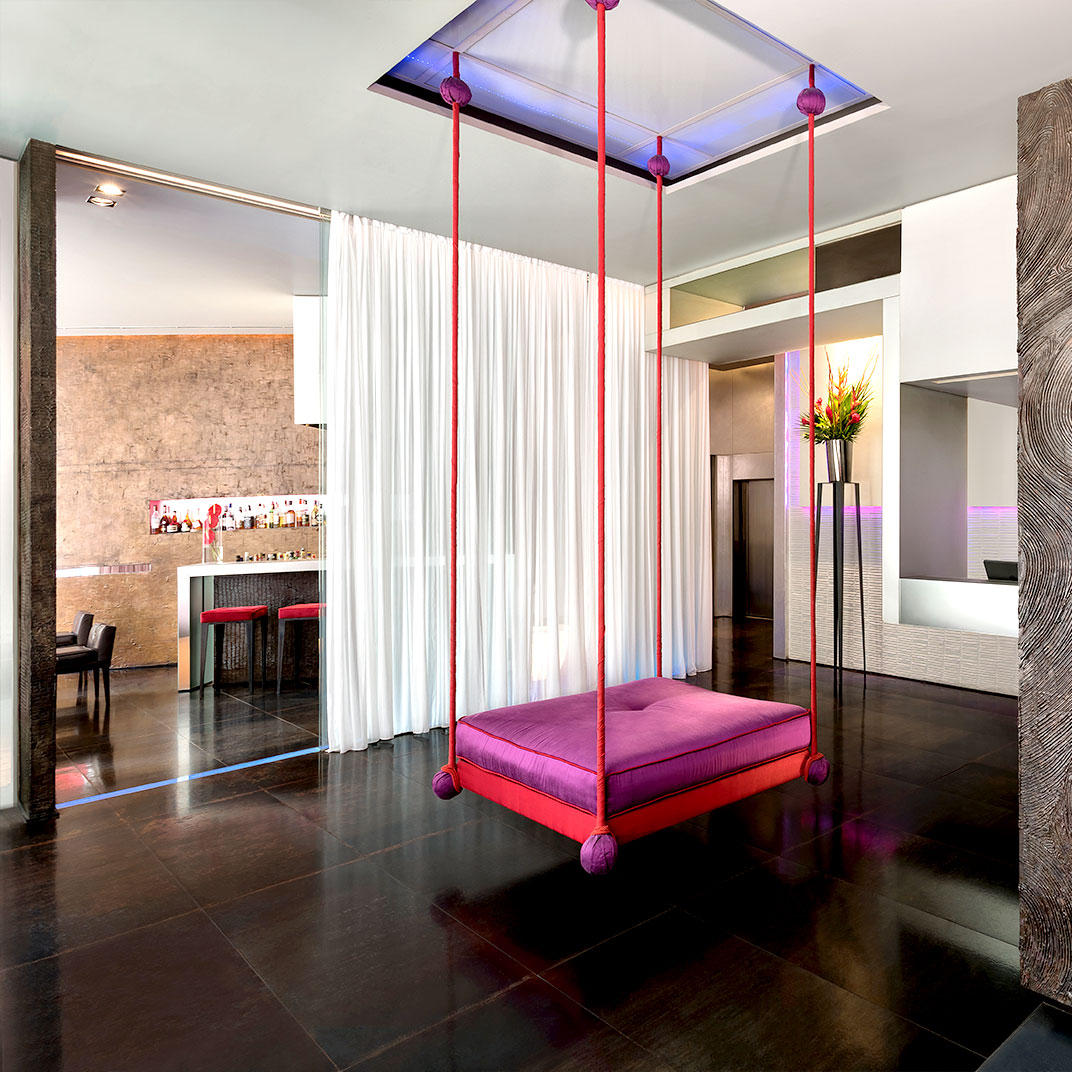
SINA The Gray
Milan
While Milan may be the capital of Italian fashion, you would never have known it from its hotels — until recently, they have all come in two flavors: the over-the-top opulence of the palatial luxury hotels, and the carpeted blandness of the corporate chains. The Gray is representative of a new (new to Italy, at least) movement toward modern, daringly designed hotels.
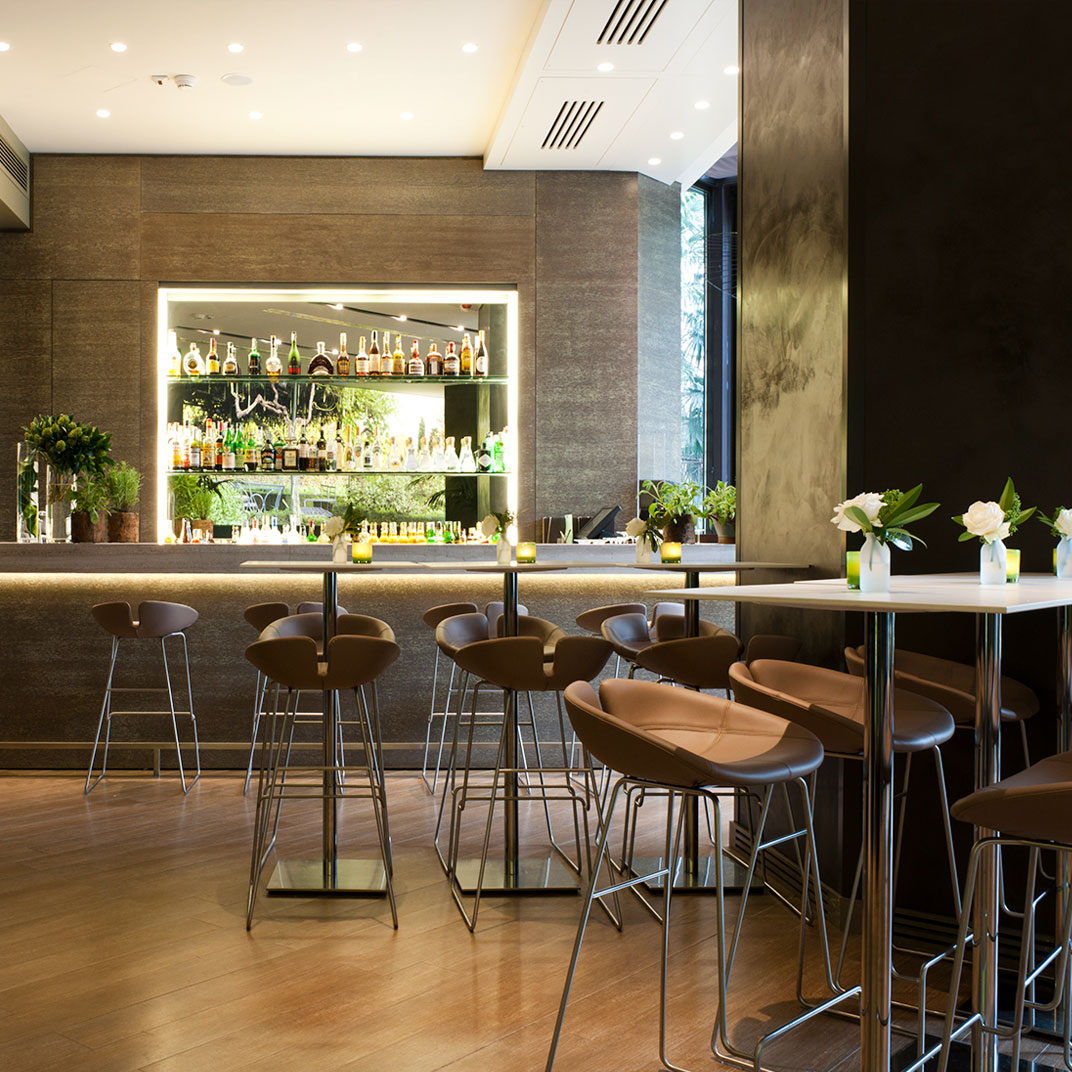
Starhotels E.c.ho.
Milan
Milan is a city that could use a bit of green. In a former life this was the Splendido, a fairly standard luxury hotel across from the central rail station, just northwest of the city center. In its current incarnation it keeps this location, of course, but it makes the most of the thin sliver of parkland between it and the station; today it’s the Starhotels E.c.ho., a bit of clever punctuation that’s meant to underline the Echo’s credentials as an eco-hotel — or, as they prefer, an “eco-contemporary hotel.”

Magna Pars L’Hotel À Parfum
Milan
Magna Pars L’Hotel À Parfum, a gleaming all-suite hotel on Via Forcella, is not without precedent: it’s owned by Milan’s Martone family of perfumers. For most of the past century the building was the family’s “essences factory,” but like Milan itself, it’s gotten quite a facelift since its industrial days. Encased in glass and flooded with light, furnished by forward-thinking designers and contemporary Milanese artisans, it looks every bit the live-in design showroom that it pretty much is, perfectly at home in a neighborhood defined by its design studios, architecture firms and fashion houses.

Vico Milano
Milano
The first wave of Milanese boutique hotels were grand gestures, tasked with representing Italy’s design capital to the world. Vico Milano, by contrast, is a more personal vision, a small-scale hideaway by a family that also owns the Castello di Vicarello in Tuscany. More personal, yes, but no less stylish — its public spaces are dazzling, filled with design furniture and contemporary art, while its seven rooms and suites are handsome in a more relaxed way, delicately balanced between sparse simplicity and organic warmth.

VIU Hotel Milan
Milan
When you hear about a hotel with a huge garden opening in a big city like Milan, the first question is where — and the second is how. Hotel Viu Milan is located in the happening neighborhood of Porta Garibaldi, home to the 10 Corso Como design center and one of Milan’s very own Eataly outposts — not exactly on the outskirts of town. So how did they do it? Easy: the garden is vertical. The greenery climbs up the edges of the tall glass-fronted building, framing the hotel and its rooftop — complete with swimming pool and terrace bar — in a dazzling display of contemporary landscape architecture.

Executive SPA Hotel
Fiorano Modenese
The name doesn’t quite do justice to a hotel that takes an unusual late-modernist structure in Fiorano Modenese — the home of Ferrari, among other attractions in Italy’s so-called Motor Valley — and transforms it into an ultra-stylish, ultra-contemporary boutique hospitality experience. Executive Spa Hotel’s 1980s silhouette seems built for speed, but inside, it’s a state-of-the-art hotel whose 64 rooms showcase the finest fixtures and furnishings from today’s top Italian makers.
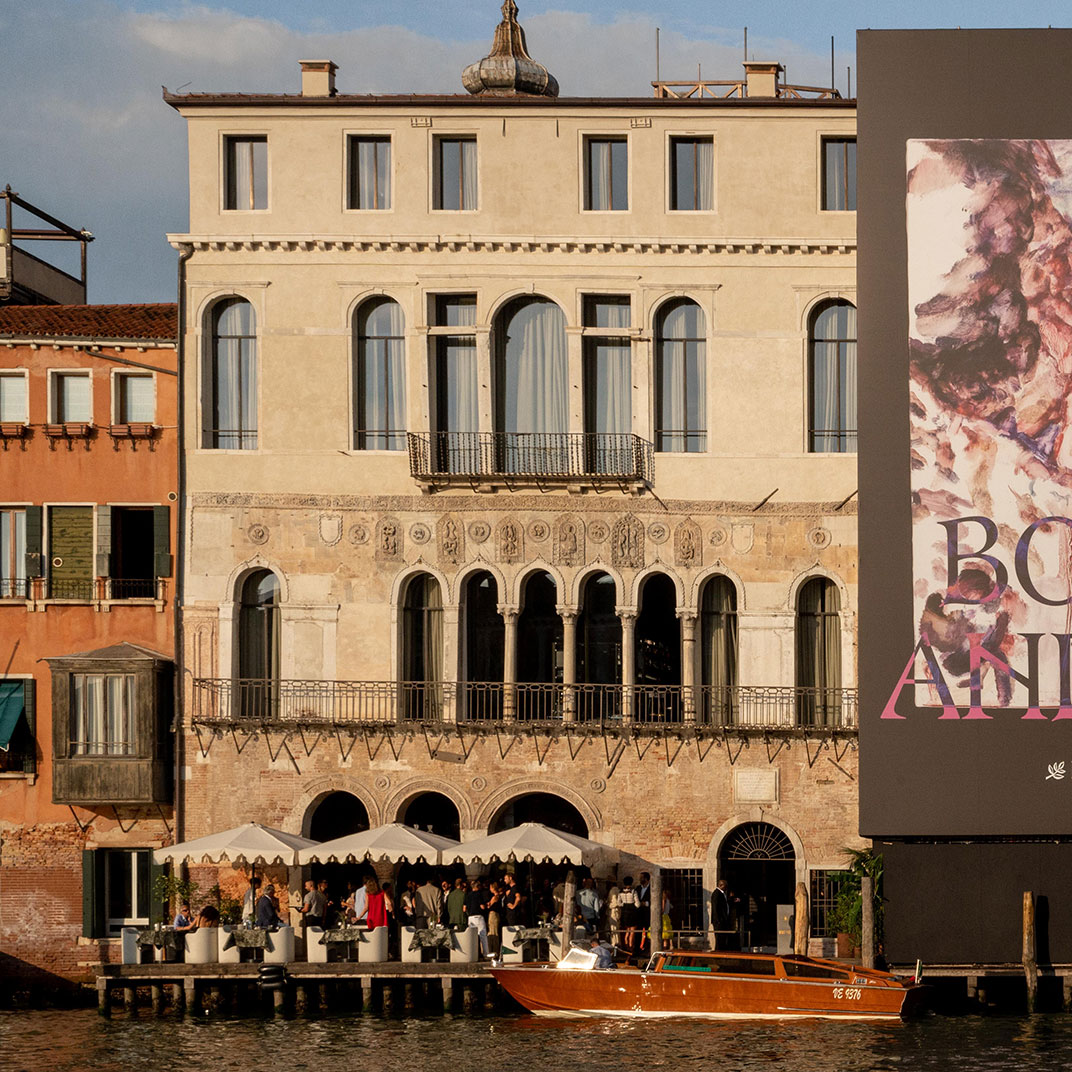
The Venice Venice Hotel
Venice
There’s no escaping the past in Venice; even the Venice Venice Hotel, dedicated as it is to “postvenezianità” — post-Venetian-ness — finds itself in the 13th-century Byzantine-style Palazzo Ca’ da Mosto, overlooking the Grand Canal and the Rialto Bridge. Its owners, however, have their sights set squarely on the future, and take their inspiration from the avant-garde spirit that they feel has always been an integral part of Venetian life.

Seehotel Ambach
Caldaro
Don’t let the names mislead you. Seehotel Ambach, designed by architect Otmar Barth, lies on the Italian side of the border, in the Alpine province of South Tyrol. It’s a modernist classic from the Seventies, a decade whose style is only now being appreciated for its utopian spirit. And if this retreat on the shores of Lake Caldaro isn’t utopia, we don’t know what is — the gentle arch of the building allows for panoramic views from its terraces and sunlight-filled rooms, providing a remarkably close connection between the interiors and the landscape.

Terra – The Magic Place
Sarentino
It’s not the most modestly named hotel on the planet, but as you’ll see, Terra – The Magic Place has every reason to feel special. It starts with the location, high in the Italian Dolomites, where the word “magic” is scarcely an exaggeration. The hotel, too, is memorable, a modernist interpretation of Tyrolean chalet architecture. And of course there’s the restaurant that inspired it all: the two-Michelin-star Terra, where chef Heinrich Schneider and his team prepare a one-of-a-kind experience for dinner guests surrounded by breathtaking mountain views — and accompanied by a bottle of wine you’ll personally choose from the cellar.

Nordelaia
Cremolino
It’s hard to imagine a hospitality experience much more delicious than a farmhouse hotel in the hills of Piedmont. Nordelaia begins with an 800-year-old farmhouse, extensively reimagined by the London-based design studio These White Walls; the result is still beautifully rustic but now also unmistakably modern, full of historical details interwoven with modern fixtures and furnishings.

Urban Hive Milano
Milano
High-end luxury travelers have always been well served by the Milanese hotel market; less common in Italy’s most fashionable city are hotels that appeal to a younger and more diverse crowd. Urban Hive Milano, in the Brera district, just to the north of the city center, aims to fill this gap.

Byblos Art Hotel Villa Amista
San Pietro In Cariano
We’ve seen design hotels, and we’ve seen fashion hotels, but the Byblos Art Hotel Villa Amistà is more than this: it’s also something like a museum, a showcase for a family’s impressive collection of 20th-century design objects and contemporary artworks, right down to the gallery-style placards in every room listing the pieces contained within.


